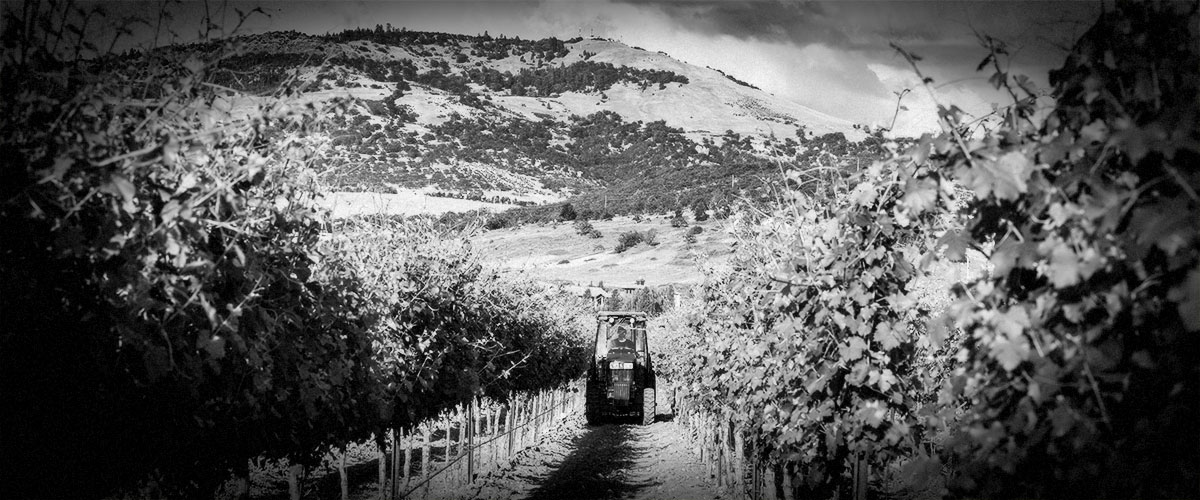by Chris Russell, Contributor
Spring is a time of anticipation in the vineyard. It is when the vintage’s crop begins its next stage of development and the potential of a new growing season fills the air. As temperatures rise, the vineyard awakens from its winter slumber and delicate buds begin to emerge from the vines, eventually giving rise to flowers and fruit. This special time of year isn’t without its risks, however—it’s a time of both excitement and watchfulness over the emerging crop.
Signs of Life
Preparations for spring begin in the winter, when dormant grapevines are pruned. Allowed to grow freely, grapevines would naturally be large and bushy with lots of old growth. Because fruit appears only on new shoots, an unpruned grapevine wouldn’t normally produce fruit of superior quality, nor would the grapes appear in a predictable location. While pruning is primarily done to control the growth pattern of the plant, it also protects the overall health of the vineyard. Concentrating fruit production to predictable locations simplifies management of fruit-related diseases and maladies. Removing unneeded old growth also permits better air circulation throughout the vine, reducing the potential for diseases brought on by excessive intracanopy moisture.
When spring arrives and temperatures start to rise, the grapevines awaken. They convert a portion of their starch reserves into sugar to feed themselves, and sap begins to flow. Small green buds appear, swelling in size as temperatures continue to warm. Soon, during what’s called “bud break,” the buds dramatically burst through their cotton-like fibrous protective cover, revealing bright green, brand-new shoot tips. The new shoots grow rapidly and produce leaves along the way. The newly formed leaves immediately provide additional nourishment from photosynthesis, and growth accelerates as the leaves increase in number and efficiency.
Although primordial clusters that form in the fruiting zone near the base of the new shoots are visible as early as a few weeks following bud break, the individual petal-less flowers (called inflorescences) destined to become berries don’t bloom until late spring. After self-pollination, the process known as “fruit set” begins: the grapes begin to grow. By the end of spring, the tiny grapes are visible, though they need the rest of the growing season to mature and ripen.
Tending the Soil
In spring, we also pay special attention to 2Hawk’s extraordinary soil. The growth, or canes, pruned from the vines over the winter are allowed to dry out on the vineyard floor. With spring’s warmer, dryer weather, the canes are ready to be chopped into mulch and tilled into the vineyard’s soil. This act of returning the canes to the soil from which they came is one of the ways we ensure the vineyard’s long-term health: the mulched canes infuse the soil with nutrients that feed the vines and organic matter that augments structure and, most importantly, enhances water-holding capacity.
Watching for Frost
Grapevines can tolerate freezing temperatures over the winter, but when new buds begin to emerge from the vines in spring, they are vulnerable to frost. If frozen, new shoots can die. The vines themselves will survive and produce new shoots, but that takes time, which means getting a later start on the growing season. Worse, the new shoots won’t necessarily re-emerge on the vines in the places carefully selected for by winter pruning. The result? A smaller, poorer-quality harvest.
In frost-prone regions, winemakers use an assortment of tools to keep frost at bay—smudge pots, for example. Ignited on frosty nights, these large oil-burning heaters keep freezing air from settling in the vineyard. Sprinkler systems can also help. While you may not think being sprayed with water on a cold night would fend off frost, water releases a surprising amount of heat as it freezes into ice, helping maintain temperatures just above freezing.
Another solution, one we make use of at 2Hawk, is wind machines—essentially large fans. More environmentally friendly than smudge pots and completely water-conscious versus overhead sprinklers, these wind machines stir up the air in the vineyard, mixing colder ground-level air with warmer air from above to protect the vineyard from frost.
One of the many reasons we’re happy 2Hawk calls the Rogue Valley home is our mild continental climate. Spring frosts are uncommon, and our growing seasons are long. The vineyard still needs our watchful attention, but the rewards—our luxury-class estate wines—are well worth the time invested.
Learn More
We hope you’re looking forward to this spring as much as we are! Do you wonder what things are like at 2Hawk at other times of the year? If so, please comment below or get in touch with us directly. We’d be happy to share more about our vineyard and why we’re so passionate about wine.
Meanwhile, if you’d like to know more about Rogue Valley wines, here are a few ways:
- Learn more about how our grapes complete their journey from harvest to bottle in our blog post How Does Wine Fermentation Work?
- Visit the tasting room to sample our current wines.
- Follow us on Facebook and Instagram to keep up with the latest happenings.

